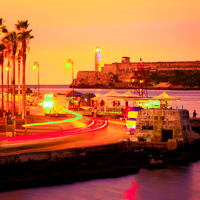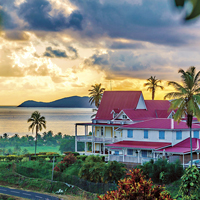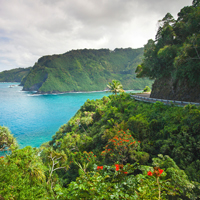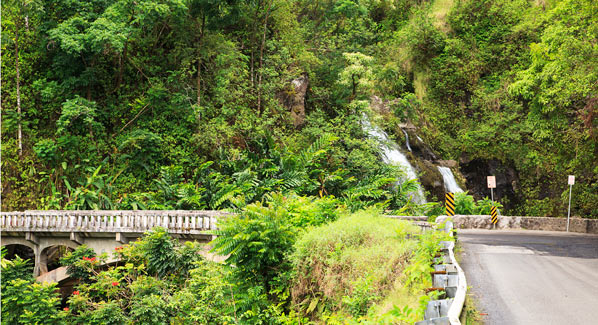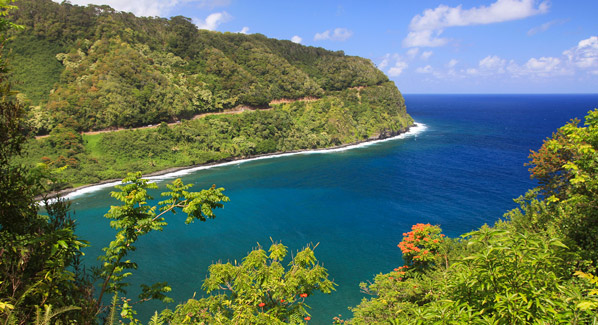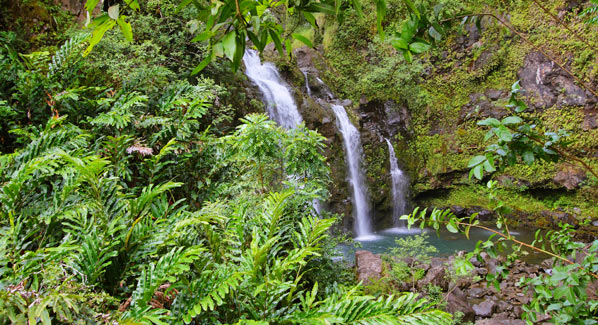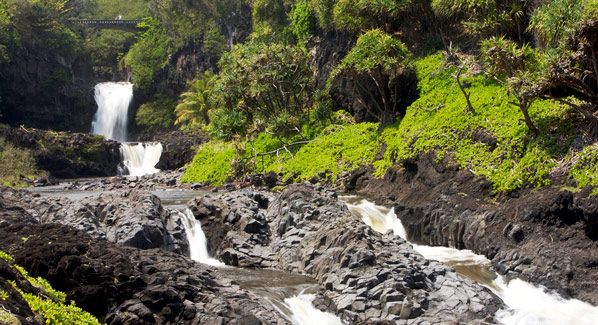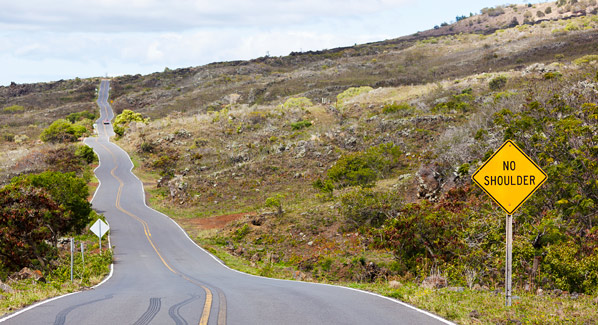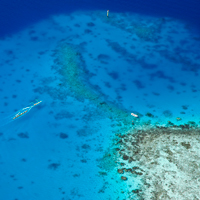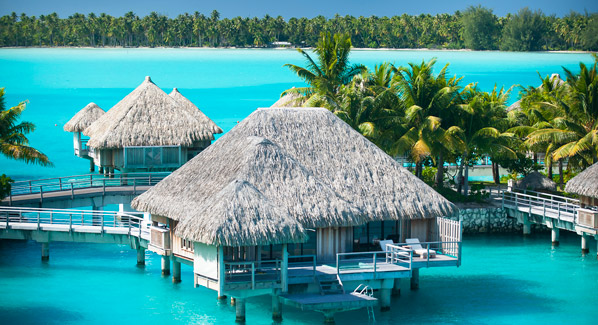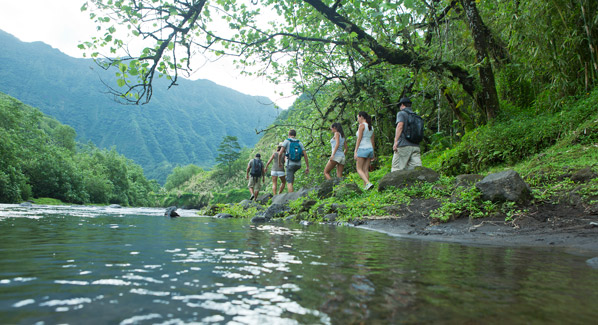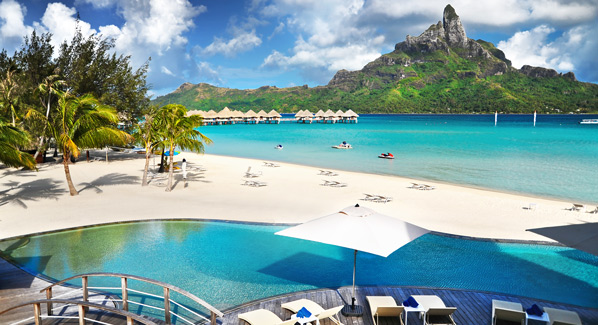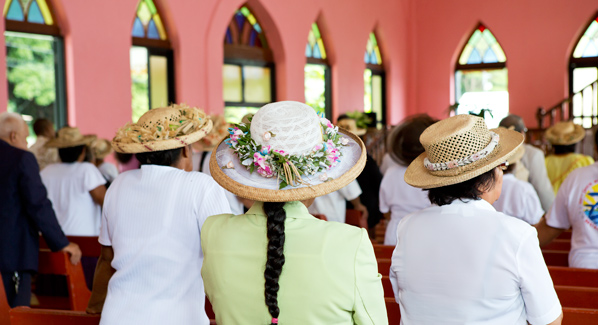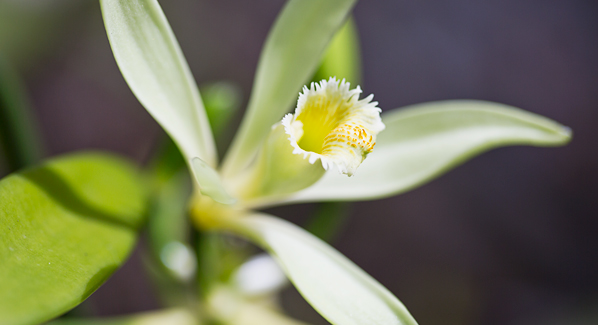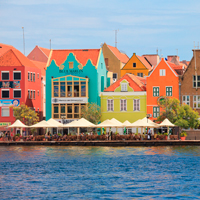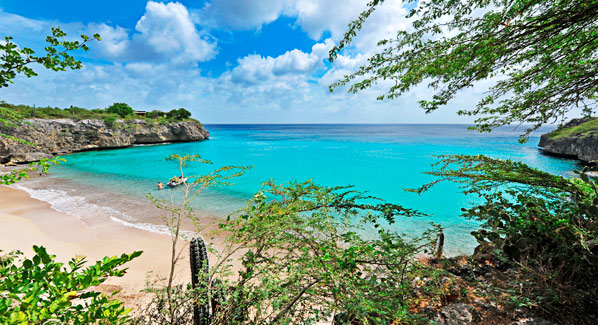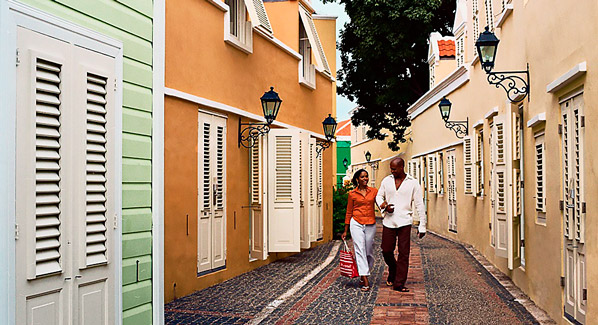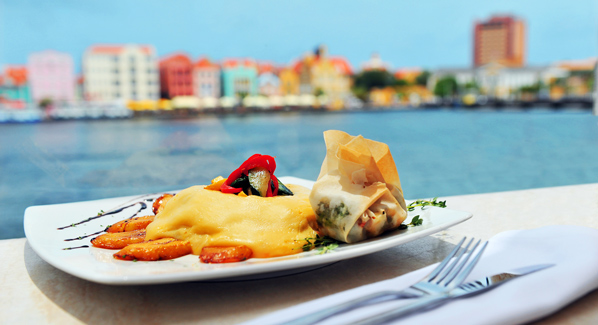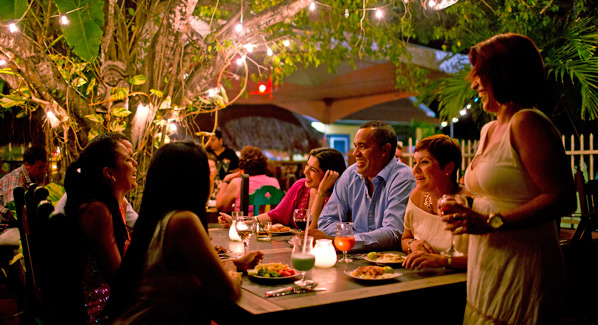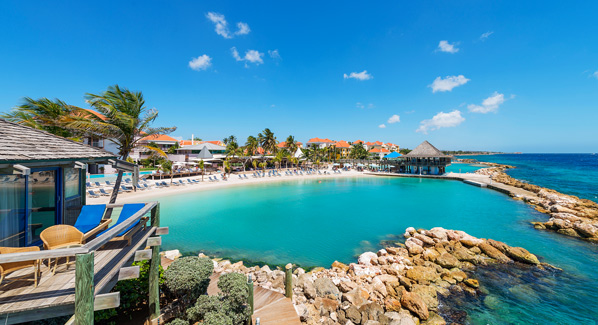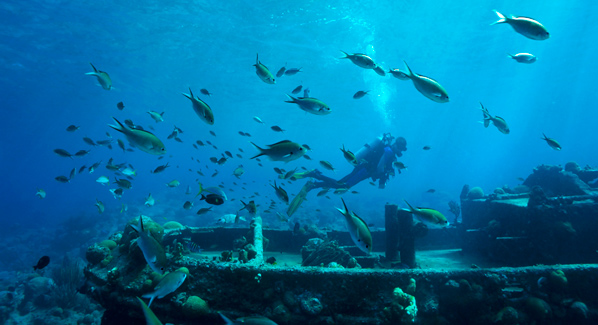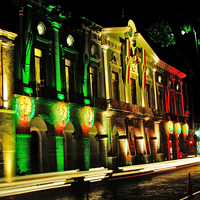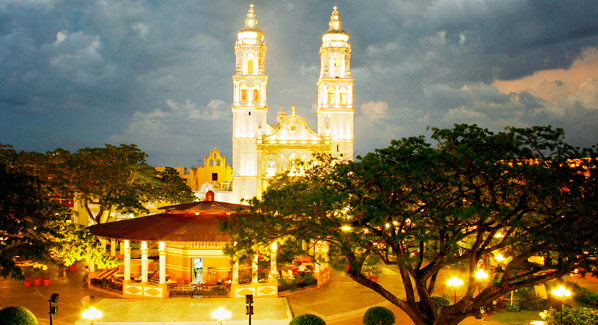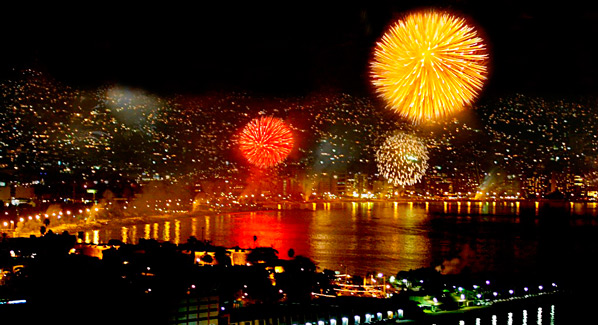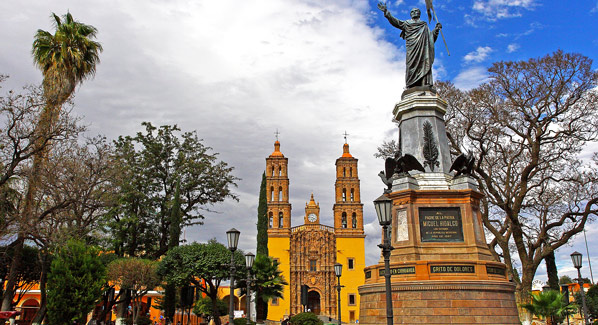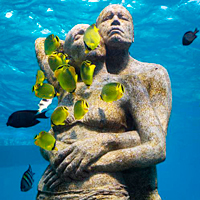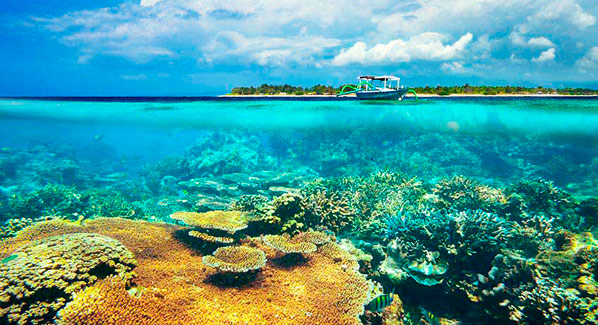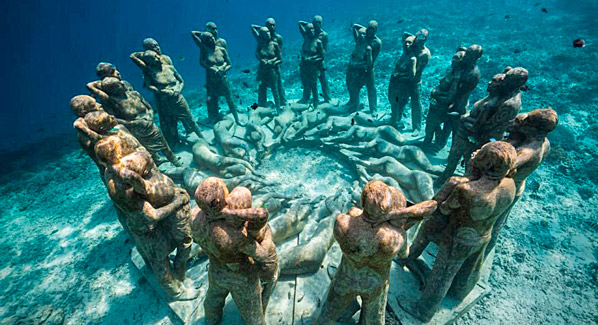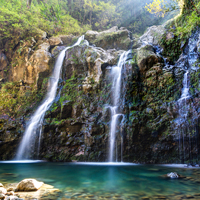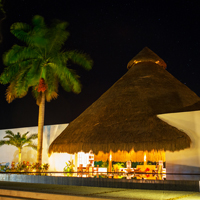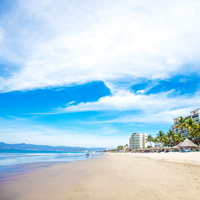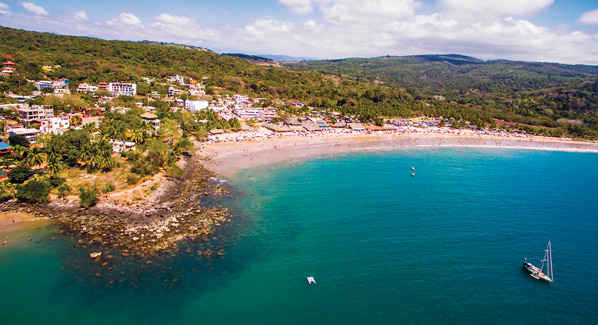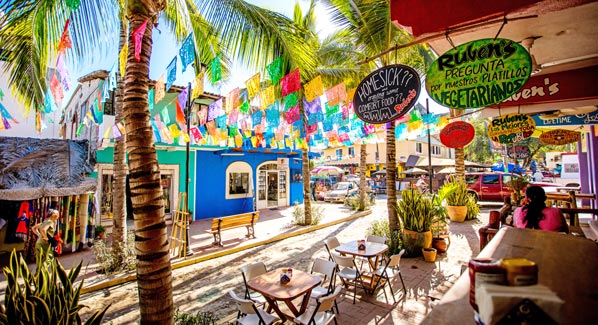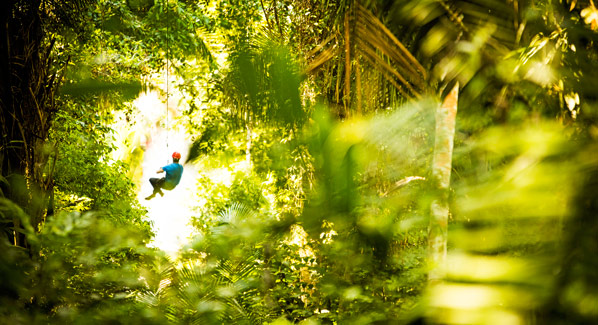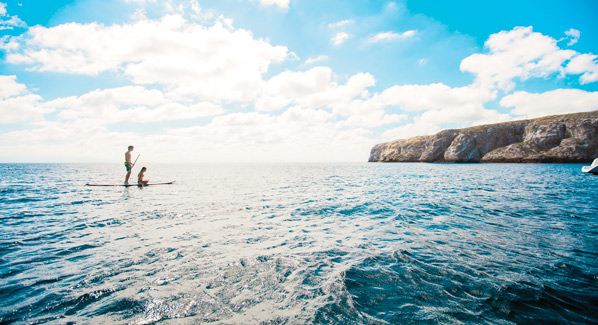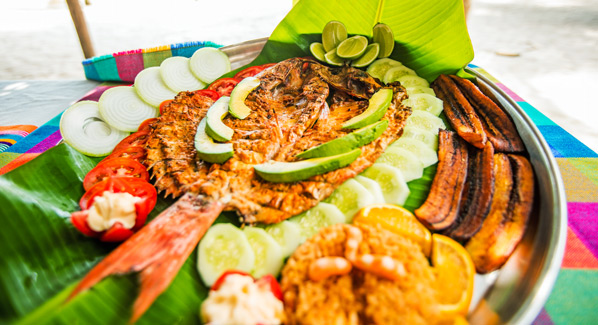Mexico’s ancient cities draw visitors from around the world. Most will arrive at these sites by tour bus, follow their guide on a standard route through pyramids and temples, and then clamber back aboard in time to hit a nearby gift shop. But there’s another way. Some of the country’s most popular and impressive archeological sites are served by nearby hotels. Stay at one of these properties and you can visit the ancients early, or stay late to take in the surroundings without the crowds.
Explorean Kohunlich at Kohunlich
This adventure-themed resort is tucked into the Yucatan jungle 20 miles west of the coastal town of Chetumal. It is an upscale all-inclusive, but with a difference. Luxury meets nature in a collection of thatch-roofed guest bungalows and cabanas that showcase the indigenous flora and fauna, and pay homage to the region’s historic Mayan culture. Also unique to the Explorean brand is daily-guided activities offered as part of the all-inclusive rate. Billed as soft adventures, these vary daily, and include everything from jungle treks and rope courses to night kayak tours and bike rides to the archeological sites.
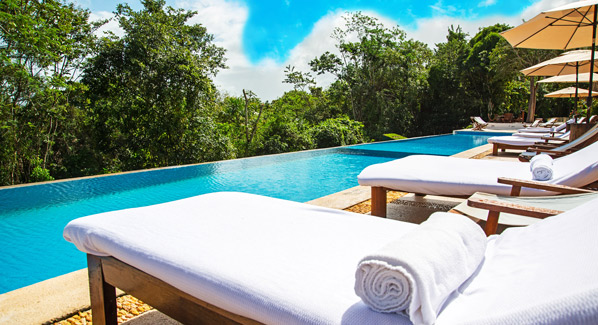
The elevated pool deck at the Explorean Kohunlich resort gives guests an up-close view of the lush jungles of the Yucatan lowlands. Photo: Explorean
Kohunlich Ruins
The must-do activity at Explorean is a visit to the ancient city of Kohunlich. This site dates back to the Early Classic Mayan period, and was thriving as a regional trade center as early as 500 B.C. The ruins remain surrounded by jungle, and echo to the cries of howler monkeys. A highlight of any site tour is the Temple of the Masks, a 2,500-year-old pyramid with a central stairway decorated with a collection of eight-foot-high human masks that remain remarkably well preserved. The site is also noted for it’s extensive network of water channels, which represented an amazing feat of hydraulic engineering. The best views are found by climbing the platform known as 27 Steps, which rises above the surrounding jungle. Though sometimes visited by tour busses, the grounds of Kohunlich usually see relatively few visitors.
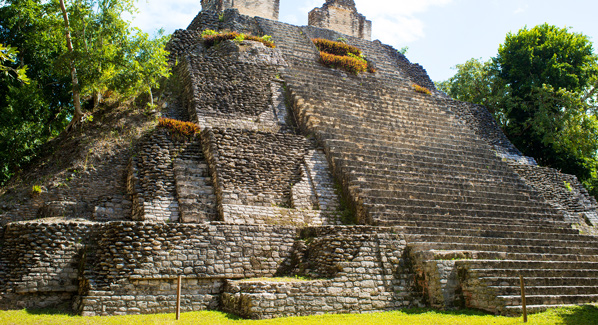
For more than 1,500 years, the Mayan city of Kohunlich remained an important stop on the trading routes that crisscrossed Central America. Photo: Fredtruck/Flickr
Hotel Chan-Kah Resort Village at Palenque
The Chan-Kah Resort Village is the closest full-service hotel near the Palenque archeological site, but that’s not the only reason to stay at this unique property. The hotel’s 76 stand-alone casitas are tucked into a 50- acre ecological reserve, and each includes a pair of window walls that showcase the lush jungle foliage just outside. Buildings, patios and pathways make extensive use of native stonework, and there are three lagoon-like pools also built with native rock to resemble the region’s natural cenotes. The open-air dining area enjoys sweeping forest views, and there is a full- service spa on site. In addition to the ancient city that is practically next- door, the surrounding area offers a number of refreshing waterfalls, including the famous cascades of Agua Azul.
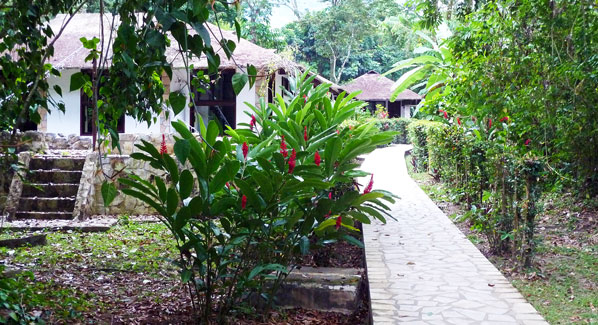
Stone pathways connect the individual casitas of the Chan-Kah Resort Village. The resort’s 50-acre grounds showcase native foliage and are a haven for bird life. Photo: Rob Young/Flickr
Palenque Ruins
The ruins of Palenque are one of the most popular attractions in the Mexican state of Chiapas. The soaring pyramids of this medium-size site contain some of the finest sculptures, carvings and building architecture of any Mayan city. Walls filled with well-preserved hieroglyphics have provided historians with detailed insights into the history and traditions of the city’s residents and rulers. Any visit should include the Temple of Inscriptions, which houses the second longest glyphic text from the Maya world. Also in the temples is a hidden passageway that leads to the tomb of Pacal the Great, Palenque’s most powerful king. Other highlights include the Temple of the Cross, Temple of the Sun, and Temple of the Foliated Cross, each of which are adorned in sculptures and intricate bas-relief carvings.
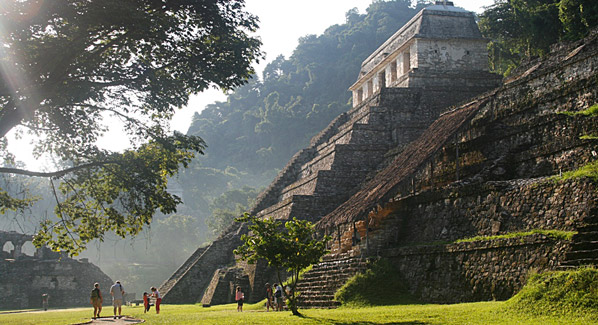
Almost 90 percent of the city of Palenque remains covered in jungle. The excavated portion includes impressive pyramids and temples. Photo: Carlos Galindo/Flickr
Mayaland Hotel and Bungalows at Chichen Itza
This landmark property remains the premier address for visitors to the archaeological site at Chichen Itza. Created in 1923, the hotel’s architecture is representative of the Yucatan region’s 19th century haciendas, with Moorish and Spanish influences. Family owned and operated throughout it’s history, Mayaland is known for integrating the Mayan culture’s storied past into its identity. Each hotel associate is of direct Mayan ancestry, there is a resident anthropologist versed in the traditions and culture of the region, and Maya is the hotel’s official language. Although a stay at Mayaland is very much a cultural immersion; it is also a luxurious retreat providing personal service and excellent cuisine. The lushly landscaped grounds include the outdoor pools and luxurious bungalows inspired by Maya casitas, each with private outdoor gardens. The hotel has an on-site spa, and offers a range of outdoor activities such horseback rides on jungle trials. As an added perk, guests have a private entrance to the archeological park.
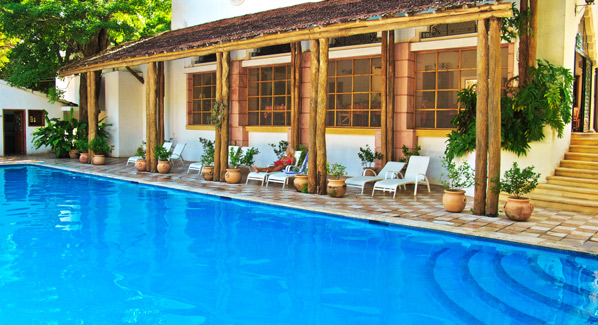
For almost 100 years, the Mayaland Hotel has been a favorite with visitors to Chichen Itza. The resort is now operated by the descendants of the founder. Photo: Graeme Churchard/Flickr
Chichen Itza Ruins
Chichen Itza is considered one of the most important cities of the Mayans, and for more than 150 years, it has also been one of the most visited. A number of the site’s iconic pyramids and structures have been meticulously excavated and in some cases restored to provide an impressive glimpse at the city’s former size and design. The most recognized attraction is the Temple of Kukulkan. This 100-foot-high pyramid is aligned with the sun’s path to create shadows said to resemble a creeping serpent. Other highlights include the ball court, celestial observatory, and the Chac Mool altar at the Temple of the Warriors.
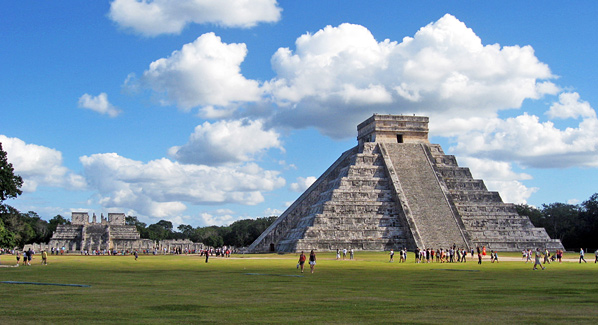
The iconic Temple of Kukulkan at Chichen Itza. Each night, it is the site of a spectacular sound and light show that tells the story of the ancients. Photo: Ramos Andrade/Flickr
Uxmal Resort Maya at Uxmal
If tour buses and crowds aren’t your thing, you can book a room at the modern Uxmal Resort. From there, you can make a short drive or a half-mile morning walk to the archaeological site, getting there well ahead of the day trippers arriving from Merida or the Cancun area. The hotel’s 82 well- appointed rooms offer a full range of modern amenities such as air conditioning, Wi-Fi and flat-screen televisions, along with an on-site spa, pool, 24-hour fitness center and a well-regarded restaurant. A highlight is the view from room balconies, which takes in the jungle and the ancient city. To get into the spirit of the local culture, guests can also experience a purifying temazcal ceremony in the resort’s traditional Mayan sweat lodge.
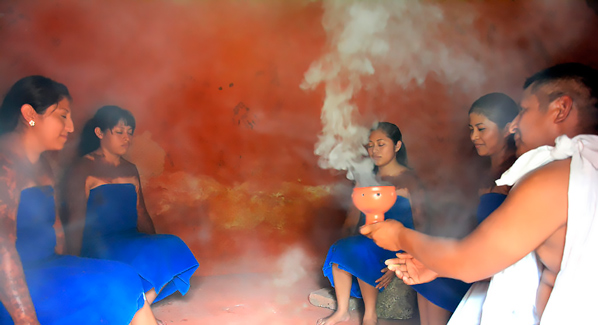
The Uxmal Resort Maya is a four-star property that provides sweeping views of the jungle, a Mayan sweat lodge and the Uxmal archaeological zone is just a half-mile away. Photo: Uxmal Resort
Uxmal Ruins
Uxmal was one of the most powerful cities in the Mayan empire. It was still inhabited at the time the Spanish arrived, and though abandoned soon after, its impressive buildings, pyramids and roads were never fully lost to the jungle. The site has attracted international visitors since the early 19th century, and benefits from ongoing repair and restoration work. Uxmal’s most impressive structure is the 130-foot-high Pyramid of the Magician, which is unique among Mayan structures, as it incorporates rounded sides, and an elliptical base. This and other ceremonial structures are said to represent the pinnacle of late Maya art and architecture. A number of buildings are adorned with likenesses of Chaac, the Maya rain deity, and history says that when an incantation to the god was uttered during a visit from England’s Queen Elizabeth II, it immediately began to rain.
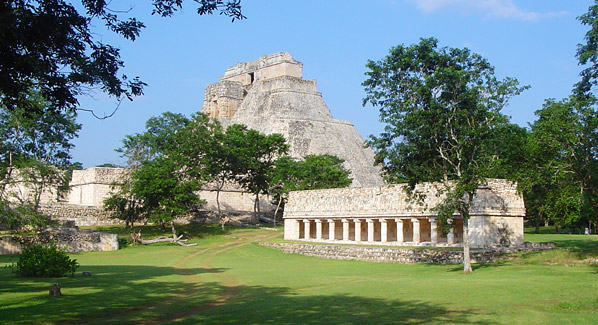
At Uxmal, the Pyramid of the Magician rises nearly 120 feet above the jungle. The structure takes in five different temples built one atop the next. Photo: Douglas Dreher/Flickr
Papaya Playa Project at Tulum
Part hotel, part beach club and fully committed to eco-conscious principles, the Papaya Playa Project is undoubtedly the most eclectic address in a beach town known for its bohemian, new age vibe. The 13-acre property sits on a 20-foot high limestone ledge overlooking a spectacular half-mile stretch of beach. The owners point out that while the site could support a 1,500-room resort, they have limited development to just 80 eco-friendly casitas, leaving more than 90 percent of the grounds in their natural state, or planted in cashew orchards and banana and coconut groves. Their commitment to sustainability includes things such as low-energy and low impact water treatment systems, extensive use of natural and locally- sourced materials and organic produce, and a pledge to become a zero emissions and zero contamination community by June 2018.

Coconut trees shade an eco-themed casita at the Papaya Playa Project. Set on a bluff above the Caribbean, these structures are positioned to take in refreshing sea breezes. Photo: Papaya Playa Project
Tulum Ruins
Just up the beach is the historic city of Tulum. This ancient settlement was established as a seaport, trading mainly in turquoise and jade. It is unique, as it is the only Mayan city built on the coast, and one of a very few protected by walls. These 20-foot thick ramparts run for a half mile on three sides of the site, with the east side left open to the ocean. Many of the buildings within this walled compound have been reduced to stone outcroppings, but a number of important structures remain. The most prominent is the iconic Castillo, which perches on a rock bluff 35 feet above the beach. Another highlight is the Temple of the Frescoes, which houses a large mural depicting the three worlds of the Mayan universe. No visit to the site is complete without taking the stairway from the Castillo down to the water, where rock outcroppings create hidden coves that are the perfect place for a swim.
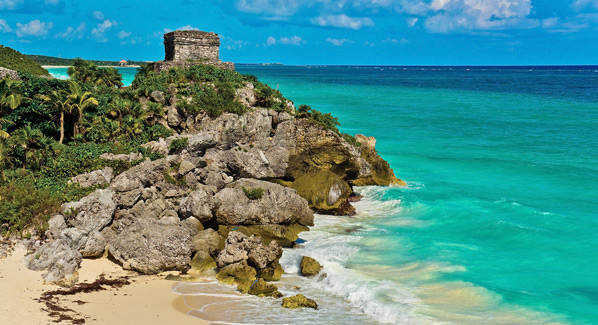
The Castillo at Tulum was once thought to be a temple, but was actually a lighthouse and navigation beacon for Mayan cargo canoes traveling the coast. Photo: Guillen Pérez/Flickr


